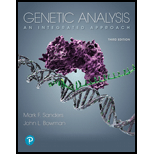
Concept explainers
To analyze:
The ABO, Rhesus (Rh) and MN blood group systems.
Determination of the following aspects from the given information:
a. The genotypes for a child with a blood group – A, Rh-, M
Woman – O, Rh-, MN
Man – A, Rh+, M.
b. The proportion of children born to a man with genotype IAIB Rr MN and woman with IAi Rr NN will have blood types B Rh- MN.
c. Paternity of a child having blood group O Rh- MN with a man having blood group B Rh+ N, a woman with A Rh+ MN.
Introduction:
A) ABO blood group system- The human blood group system is classified using antigens present on the RBC's (Red blood cells or erythrocyte). ABO blood types were revealed by the Austrian physician Karl Landsteiner (1901). ABO blood group is characterized under multiple alleles that show three or more alternative forms of a gene present on the same locus.
B) Rh blood group system:
Rhesus factor or Rhesus antigen is another isoantigen of RBC. It is the second most blood group system after ABO blood group system. The “Rh” factor is first described in Rhesus monkeys. The expression of Rh factors is denoted in Rh+ - expressed (antigen present), Rh- - deletion of the protein leads to the suppression of antigen (absence of antigen). The Rh factor is crucial during transfusion of blood from a donor to a recipient.
If the donor's Rh factor does not match with that of the recipient, it will lead to a transfusion reaction that causes hemolytic anemia. During pregnancy, Rh factor testing is very essential.
- Rh + can accept the donation of either Rh+ or Rh-.
- Rh- can only accept Rh- blood, or it will agglutinate.
C) MN blood group system-
MN blood group is discovered by Landsteiner and Levine. The MN Blood groups genes are closely linked genes present on chromosome 4. The alleles M and N show co-dominance that can have both
Want to see the full answer?
Check out a sample textbook solution
Chapter 4 Solutions
Genetic Analysis: An Integrated Approach (3rd Edition)
- What is behavioral adaptarrow_forward22. Which of the following mutant proteins is expected to have a dominant negative effect when over- expressed in normal cells? a. mutant PI3-kinase that lacks the SH2 domain but retains the kinase function b. mutant Grb2 protein that cannot bind to RTK c. mutant RTK that lacks the extracellular domain d. mutant PDK that has the PH domain but lost the kinase function e. all of the abovearrow_forwardWhat is the label ?arrow_forward
- Can you described the image? Can you explain the question as well their answer and how to get to an answer to an problem like this?arrow_forwardglg 112 mid unit assignment Identifying melting processesarrow_forwardGive only the mode of inheritance consistent with all three pedigrees and only two reasons that support this, nothing more, (it shouldn't take too long)arrow_forward
- Oarrow_forwardDescribe the principle of homeostasis.arrow_forwardExplain how the hormones of the glands listed below travel around the body to target organs and tissues : Pituitary gland Hypothalamus Thyroid Parathyroid Adrenal Pineal Pancreas(islets of langerhans) Gonads (testes and ovaries) Placentaarrow_forward
 Concepts of BiologyBiologyISBN:9781938168116Author:Samantha Fowler, Rebecca Roush, James WisePublisher:OpenStax College
Concepts of BiologyBiologyISBN:9781938168116Author:Samantha Fowler, Rebecca Roush, James WisePublisher:OpenStax College Human Heredity: Principles and Issues (MindTap Co...BiologyISBN:9781305251052Author:Michael CummingsPublisher:Cengage Learning
Human Heredity: Principles and Issues (MindTap Co...BiologyISBN:9781305251052Author:Michael CummingsPublisher:Cengage Learning
 Human Biology (MindTap Course List)BiologyISBN:9781305112100Author:Cecie Starr, Beverly McMillanPublisher:Cengage Learning
Human Biology (MindTap Course List)BiologyISBN:9781305112100Author:Cecie Starr, Beverly McMillanPublisher:Cengage Learning Biology Today and Tomorrow without Physiology (Mi...BiologyISBN:9781305117396Author:Cecie Starr, Christine Evers, Lisa StarrPublisher:Cengage Learning
Biology Today and Tomorrow without Physiology (Mi...BiologyISBN:9781305117396Author:Cecie Starr, Christine Evers, Lisa StarrPublisher:Cengage Learning





